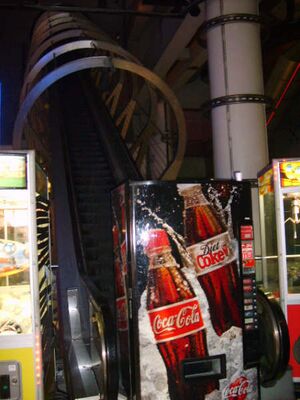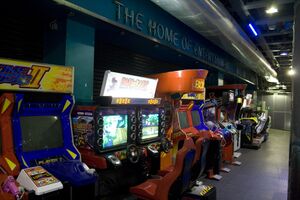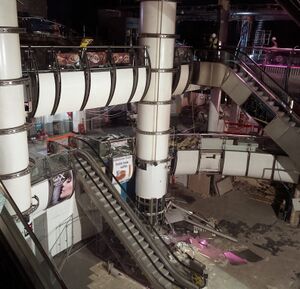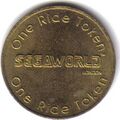Difference between revisions of "SegaWorld London"
From Sega Retro
| Line 43: | Line 43: | ||
<gallery> | <gallery> | ||
CVG UK 174.pdf|page=9|Event coverage in ''C&VG'' #174, May 1996. | CVG UK 174.pdf|page=9|Event coverage in ''C&VG'' #174, May 1996. | ||
| + | CVG UK 175.pdf|page=56|Feature in ''C&VG'' #175, June 1996. | ||
</gallery> | </gallery> | ||
Revision as of 14:36, 7 October 2015
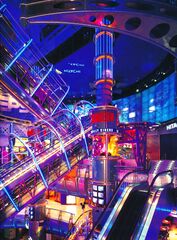
|
| SegaWorld London |
|---|
| Location: The Trocadero, London, United Kingdom |
| Google maps: 51.510490,-0.133022 |
| Opened: 1996-09-07 |
| Closed: 1999 |
This teeny-tiny article needs some work. You can help us by expanding it.
SegaWorld London was a SegaWorld indoor theme park which opened on September 7, 1996. It was housed within the London Trocadero complex within the city of London, UK.
Contents
History
Development
The Piccadilly Trocadero was originally built in 1896 as a restaurant, before closing in 1965. It re-opened as an entertainment and shopping complex in 1984, but by the early 1990s was struggling to find tenants. In 1994 it was purchased by Burford Group plc, led by Nick Leslau and Nigel Wray, who endeavoured to revamp the site for modern consumers.
At the same time, Sega, fresh from arcade and console video game successes, were making moves in opening Sega-branded arcade centres across Europe. In the case of the United Kingdom, this began with Metropolis in late 1992 and continued with the likes of Sega World Bournemouth and a handful of smaller venues using the "Sega World" name. Sega was itself one of the biggest brands in the UK at the time, riding on the successes of the Sega Master System and Sega Mega Drive (and particularly Sonic the Hedgehog), and was attempting to open a new arcade centre in the region every couple of months.
Sega had already had enormous success in Japan following a similar concept. In particular, the 1994 launch of Joypolis Tokyo has proving to be very lucrative - effectively an indoor theme park, Joypolis took things one step further by housing indoor rides and large scale attractions, and still remains active to this day. The plan was to emulate this idea in other parts of the world, so Sega Europe arranged with Burford Group to build SegaWorld London - a UK version of Joypolis.
Construction began in early 1996 on a planned £45 million project encompassing 100,000 square feet of the Trocadero site (covering seven floors), aiming to be the largest indoor theme park in the world. As well as housing six dedicated indoor rides, many of its floors would be devoted to arcade machines, and would become a new testing site for Sega's own arcade releases in the years which followed.
Opening
SegaWorld London opened in September 1996, at the height of Sonic the Hedgehog's popularity. From 1997, Pepsi sponsored the Pepsi Max Drop Ride and the Pepsi IMAX cinema, being the first 3D IMAX cinema to appear within the UK. The venue was heavily promoted by mid-90s editions of Sonic the Comic.
However, unlike Joypolis, visitor numbers were not large enough to keep the attraction open in its entirity, and with other financial issues at Sega hovering overhead, the company were forced to sell its stake to new owners in 1999, becoming known as "FunLand".
Demise
In the years that followed the site was considerably stripped down considerably - Pepsi's endorsed features were turned offline in March 2000 after the opening of the bigger London IMAX elsewhere in the city. In 2002 the top two floors were closed alongside the famous rocket escalator (although it took until May 2011 for it to be removed), however at no point was the complex significantly revamped, meaning traces of the SegaWorld layout and closed rides still existed for much of the decade.
FunLand ceased trading in July 2011, leaving only a few arcade machines in front of a locked door on the basement level.
Criterion Capital bought the site in 2005 with the view of turning the Trocadero into a hotel, the rumoured plan being to completely close the complex in early 2014 to allow construction to begin. In reality only part of the area was closed (such as the Cineworld cinema) - the rest has effectively reverted to its pre-1996 shopping area state.
